Author Photo And Bio
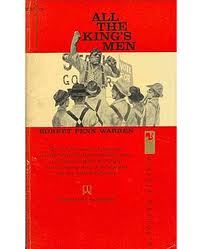 1. All the King’s Men by Robert Penn Warren (1946). In perhaps the most famous American political novel, Warren tracks the unsentimental education of Jack Burden, an upper-class, college-educated lackey to Willie Stark, the populist governor of Louisiana (whom Warren modeled on Huey Long). Burden spirals into self-loathing as he learns how political sausage is made, then finds a moral compass after Stark’s assassination —all told in a bleak poetry that marries Sartre and Tennessee Williams.
1. All the King’s Men by Robert Penn Warren (1946). In perhaps the most famous American political novel, Warren tracks the unsentimental education of Jack Burden, an upper-class, college-educated lackey to Willie Stark, the populist governor of Louisiana (whom Warren modeled on Huey Long). Burden spirals into self-loathing as he learns how political sausage is made, then finds a moral compass after Stark’s assassination —all told in a bleak poetry that marries Sartre and Tennessee Williams.
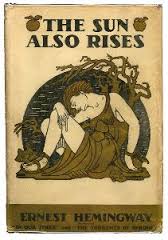 2. The Sun Also Rises by Ernest Hemingway (1926). Hemingway’s first novel recounts the revels and misadventures of the expatriate community —including the introspective writer Jake Barnes and the tantalizingly elusive divorcée Lady Brett Ashley —in Paris and in Spain’s bullfighting centers. For all their wit, wealth, or social clout and despite their rounds of drunkenness and debauchery as repetitious as the sun’s daily rising, Hemingway’s jaded, morally bankrupt characters can’t get no satisfaction.
2. The Sun Also Rises by Ernest Hemingway (1926). Hemingway’s first novel recounts the revels and misadventures of the expatriate community —including the introspective writer Jake Barnes and the tantalizingly elusive divorcée Lady Brett Ashley —in Paris and in Spain’s bullfighting centers. For all their wit, wealth, or social clout and despite their rounds of drunkenness and debauchery as repetitious as the sun’s daily rising, Hemingway’s jaded, morally bankrupt characters can’t get no satisfaction.
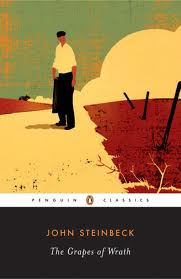 3. The Grapes of Wrath by John Steinbeck (1939). A powerful portrait of Depression-era America, this gritty social novel follows the Joad family as they flee their farm in the Oklahoma dust bowl for the promised land of California. While limping across a crippled land, Ma and Pa Joad, their pregnant daughter Rose of Sharon, and their recently paroled son Tom sleep in ramshackle Hoovervilles filled with other refugees and encounter hardship, death, and deceit. While vividly capturing the plight of a nation, Steinbeck renders people who have lost everything but their dignity.
3. The Grapes of Wrath by John Steinbeck (1939). A powerful portrait of Depression-era America, this gritty social novel follows the Joad family as they flee their farm in the Oklahoma dust bowl for the promised land of California. While limping across a crippled land, Ma and Pa Joad, their pregnant daughter Rose of Sharon, and their recently paroled son Tom sleep in ramshackle Hoovervilles filled with other refugees and encounter hardship, death, and deceit. While vividly capturing the plight of a nation, Steinbeck renders people who have lost everything but their dignity.
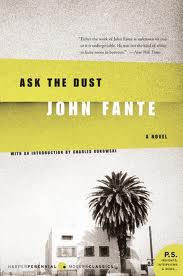 4. Ask the Dust by John Fante (1939). This coming-of-age tale features Fante’s alter ego, Arturo Bandini: a poor, innocent, aspiring writer from Colorado, stretching out his limbo in 1930s Los Angeles. Bandini prowls the city’s dusty alleys for experience he can turn into prose, eats oranges in his hotel room, and dreams of success. Awkward with women, he falls for a troubled Mexican waitress but can’t sustain the relationship. He squanders what little money he earns. All he desires is literary glory, so that even when he nearly drowns, he thinks: “This was the end of Arturo Bandini —but even then I was writing it all down.”
4. Ask the Dust by John Fante (1939). This coming-of-age tale features Fante’s alter ego, Arturo Bandini: a poor, innocent, aspiring writer from Colorado, stretching out his limbo in 1930s Los Angeles. Bandini prowls the city’s dusty alleys for experience he can turn into prose, eats oranges in his hotel room, and dreams of success. Awkward with women, he falls for a troubled Mexican waitress but can’t sustain the relationship. He squanders what little money he earns. All he desires is literary glory, so that even when he nearly drowns, he thinks: “This was the end of Arturo Bandini —but even then I was writing it all down.”
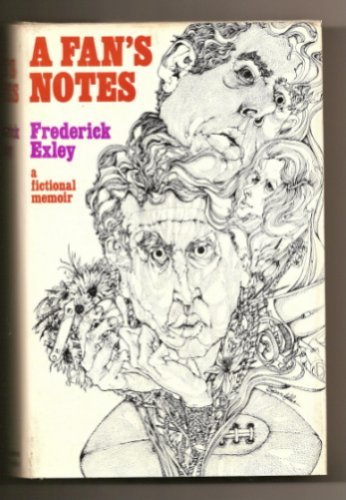 5. A Fan’s Notes by Frederick Exley (1968). A cross between Charles Bukowski and John Kennedy Toole, this harrowing, hilarious autobiographical novel portrays a raw and likable barstool dreamer. He is a slovenly, all-American misfit headed for the psychiatric institution, who fills his head with all-American fantasies of fame, wealth, and beautiful women. He doesn’t live life but watches it; his great passion is California golden boy Frank Gifford of the New York Giants, who symbolizes his hopes and whose injury triggers his self-reckoning.
5. A Fan’s Notes by Frederick Exley (1968). A cross between Charles Bukowski and John Kennedy Toole, this harrowing, hilarious autobiographical novel portrays a raw and likable barstool dreamer. He is a slovenly, all-American misfit headed for the psychiatric institution, who fills his head with all-American fantasies of fame, wealth, and beautiful women. He doesn’t live life but watches it; his great passion is California golden boy Frank Gifford of the New York Giants, who symbolizes his hopes and whose injury triggers his self-reckoning.
 6. The Long Goodbye by Raymond Chandler (1953). Chandler’s sardonic and chivalric gumshoe Philip Marlowe winds up in jail when he refuses to betray a client to the Los Angeles police investigating the murder of a wealthy woman. Marlowe’s incorruptibility and concentration on the case are challenged even more when the obsessively independent private eye falls in love, apparently for the first time, with a different rich and sexy woman. She proposes marriage, but he puts her off, claiming he feels “like a pearl onion on a banana split” among her set.
6. The Long Goodbye by Raymond Chandler (1953). Chandler’s sardonic and chivalric gumshoe Philip Marlowe winds up in jail when he refuses to betray a client to the Los Angeles police investigating the murder of a wealthy woman. Marlowe’s incorruptibility and concentration on the case are challenged even more when the obsessively independent private eye falls in love, apparently for the first time, with a different rich and sexy woman. She proposes marriage, but he puts her off, claiming he feels “like a pearl onion on a banana split” among her set.
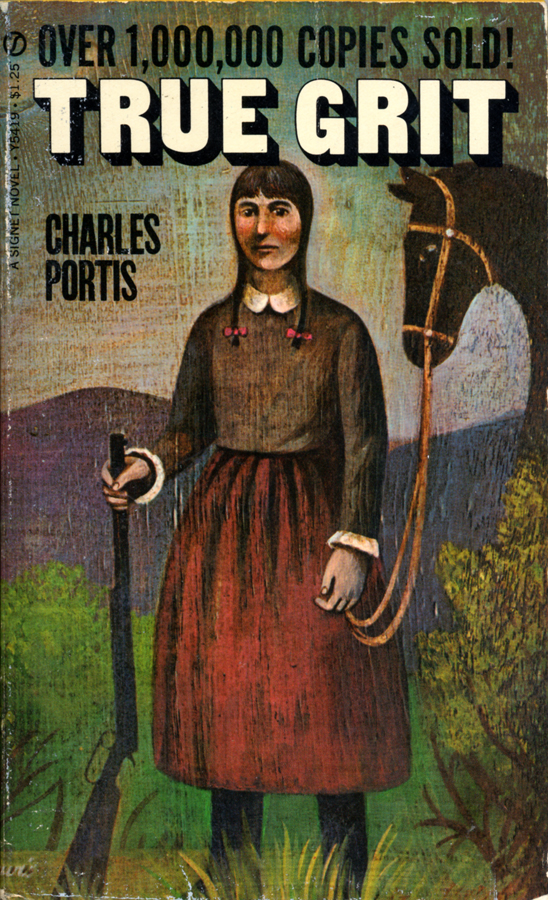 7. True Grit by Charles Portis (1968). In this epic and often comic tale of retribution, greed, and ambition, sixty-nine-year-old spinster Mattie Ross recalls her youthful struggle to hunt down her father’s killer in the wild Indian territory of the 1870s. While Ross studies her scripture, she breaks bread with the foul-mouthed, seldom-sober Marshall who is helping her. Both a woman’s coming-of-age saga and an adventure riddled with biblical allegory, the novel reveals the depth of grit in characters plagued by contradictions.
7. True Grit by Charles Portis (1968). In this epic and often comic tale of retribution, greed, and ambition, sixty-nine-year-old spinster Mattie Ross recalls her youthful struggle to hunt down her father’s killer in the wild Indian territory of the 1870s. While Ross studies her scripture, she breaks bread with the foul-mouthed, seldom-sober Marshall who is helping her. Both a woman’s coming-of-age saga and an adventure riddled with biblical allegory, the novel reveals the depth of grit in characters plagued by contradictions.
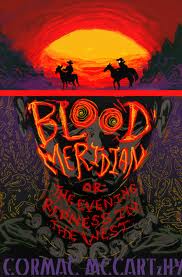 8. Blood Meridian: Or the Evening Redness in the West by Cormac McCarthy (1985). D. H. Lawrence famously remarked that the archetypal American hero was a stoic, a loner, and a killer. Cormac McCarthy’s tale of the formation and dissolution of a band of scalp hunters in northern Mexico in the late 1840s embodies that dire maxim. Led by a soldier named Glanton and a mysterious, hairless, moral monstrosity known as the “Judge,” these freebooters wipe out Indians, Mexicans, and each other amidst a landscape of such sublime desolation one feels it leaching into their very souls.
8. Blood Meridian: Or the Evening Redness in the West by Cormac McCarthy (1985). D. H. Lawrence famously remarked that the archetypal American hero was a stoic, a loner, and a killer. Cormac McCarthy’s tale of the formation and dissolution of a band of scalp hunters in northern Mexico in the late 1840s embodies that dire maxim. Led by a soldier named Glanton and a mysterious, hairless, moral monstrosity known as the “Judge,” these freebooters wipe out Indians, Mexicans, and each other amidst a landscape of such sublime desolation one feels it leaching into their very souls.
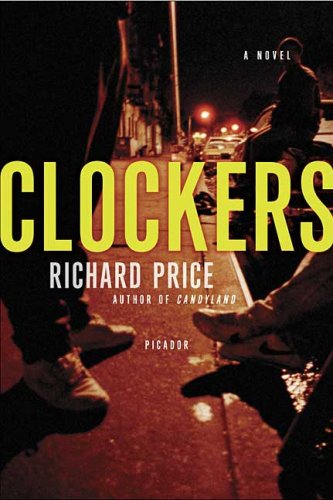 9. Clockers by Richard Price (1992). When cocaine dealer Strike Dunham’s hardworking brother confesses to murder, burnt-out detective Rocco Klein is convinced that Strike is behind the crime. As Klein turns the ulcer-ridden nineteen-year-old’s world upside down, Price provides a street-level look at America’s drug epidemic and searing portrayals of addiction —to drugs, power, status, and action.
9. Clockers by Richard Price (1992). When cocaine dealer Strike Dunham’s hardworking brother confesses to murder, burnt-out detective Rocco Klein is convinced that Strike is behind the crime. As Klein turns the ulcer-ridden nineteen-year-old’s world upside down, Price provides a street-level look at America’s drug epidemic and searing portrayals of addiction —to drugs, power, status, and action.
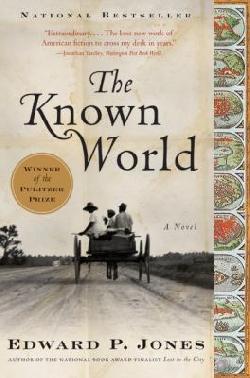 10. The Known World by Edward P. Jones (2003). Winner of both the Pulitzer Prize and National Book Critics Circle Award for fiction, this rich, sprawling novel centers on the life and legacy of an African American man who was also a slaveholder. Through a wide cast of characters, who display a wide range of perspectives and emotions, Jones examines the concept of slavery, especially how the master–slave relationship corrupts the soul.
10. The Known World by Edward P. Jones (2003). Winner of both the Pulitzer Prize and National Book Critics Circle Award for fiction, this rich, sprawling novel centers on the life and legacy of an African American man who was also a slaveholder. Through a wide cast of characters, who display a wide range of perspectives and emotions, Jones examines the concept of slavery, especially how the master–slave relationship corrupts the soul.